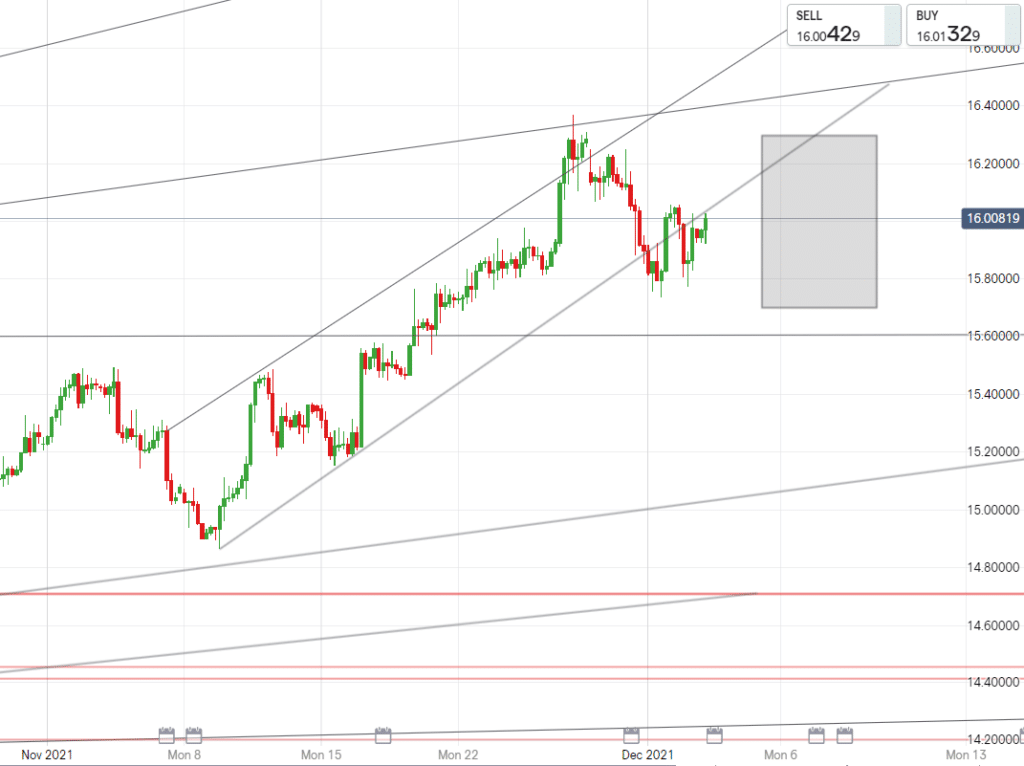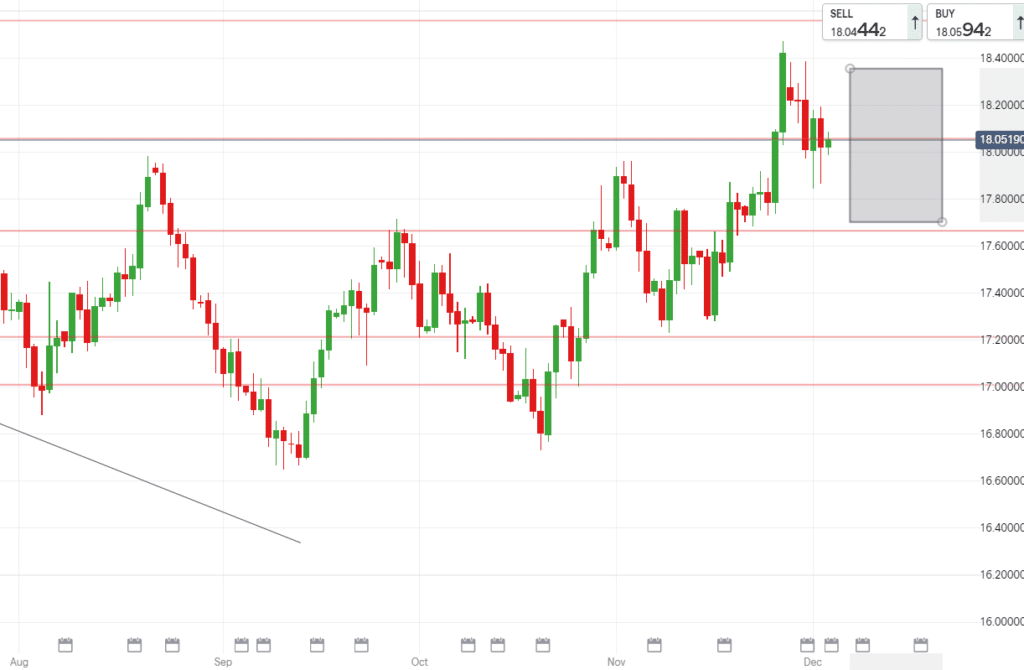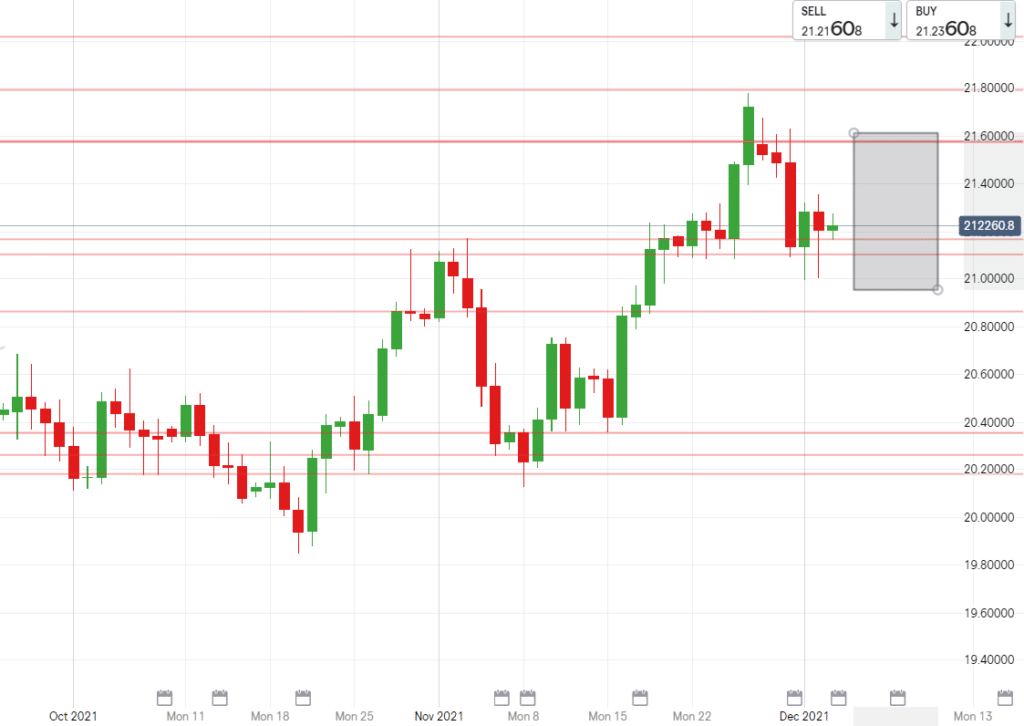OVERVIEW
Volatility remains in the dollar’s favour as new Covid waves and risk off sentiment keep investors away from the rand.
Central bank decisions are approaching and will cause a lot of speculation of what courses of action officials will take on rate hikes, inflation and stimulus.
sa markets
The dollar-rand is experiencing a lot of volatility at the moment, with bias being in favour of a strong dollar as markets begin to price in higher odds of rates being hiked at the US Fed meeting on 14-15th of Dec.
Dollar positivity can be attributed to comments from US Fed Chair Jerome Powell stating that the Federal Reserve will consider swifter action as well as current US economic data outperforming expectations.
Due to hints that it is time to normalize policy in the US and risk appetite being largely off due to the new Covid waves, the rand is finding itself at the mercy of global sentiment.
The Turkish Lira, which is strongly tied with the rand’s performance, experienced more struggles this week and lost further ground which put the rand under more pressure. Investors are already running to the dollar as a safe haven, commodity currencies like the rand are not the current currency of choice for buyers.
What to expect next week :
Today markets will be watching the US job data results, should it outperform we can expect USDZAR to retest well over R16.00/$.
The outlook is in favour of dollar strength and the more developments that come out about the new variant, the more we can expect the markets to react tensely against the rand.
News of vaccine blood clots and more global travel restrictions wont help the rand, but the closer we get to central bank talks the more buyers may sell stronger currencies due to anxiety and that may be the rand’s chance to recover some ground.
Technically:
The dollar continues to dominate, analysts have cited that if you remove the fog of the Omicron variant’s uncertainty then you will still see that the dollar is in an upward channel.
We can expect the USDZAR to surge to R16.15/$ if today’s US jobs data are strong. Negative virus news will push the pair towards R16.25/$.
If dollar strength relaxes or traders sell off their positions we expect USDZAR to trade sideways around R15.90/$ while straddling the bottom line of our channel. We wont see better levels until the pair solidly breaks R15.74/$ and R15.60/$.
EUROPEAN MARKETS
The European Central Bank cited earlier this week that EU finances are prepared to navigate the new Covid wave.
Despite this positive outlook, the ECB is being criticized for their relaxed approach and lack of urgency to raise rates.
EU inflation surged up to a 20 year high of 4.9% in November, due to these numbers the ECB officials are expected to be under pressure to reduce it’s stimulus program so not to combat concerns of currency devaluation.
The euro is likely to fluctuate before it’s mid-month central bank meeting as theories emerge about what monetary actions the ECB will take.
The US Fed admitted that current inflation is not temporary and now the world is waiting for the ECB to also finally admit that their views on inflation being short-term due to temporary factors may require reassessment.
Technically:
EURZAR has lost momentum and is ticking slightly lower. We can expect a similar range for next week as the past few days, with a ranging of rates around the support of R18.05/€. A high of around R18.35/€ is still on the cards should risk appetite deplete, but we do expect a calming of the EUR below R18.00/€ if the ECB doesn’t take an aggressive stance next week.
uk markets
The pound remains elevated against the rand but has succumbed to a lot more pressure than the euro.
GBPZAR started the week at highs of R21.78/£ and is currently trading around R21.20/£.
A hawkish US Fed set for faster tapering and rate hikes are putting the pound on the back foot, as well as expectations declining for the UK to cut rates due to the occurrence of the Omicron variant.
Rate hikes should be on the table due to inflation and lowered demand for services in the UK, however if the new strain proves worse than expected then any rate cuts on the 16th of December and in February are thought to be “shaken out of the tree”. A rate hike would strengthen the pound, putting the hike off would place the pound under further duress.
Technically:
The GBPZAR has failed to break below R21.00/£ this week and although we are not as elevated as last week, threats remain for the pair to remain around these levels while volatility remains. Until we break R21/£, and R20.85/£ we wont see more relaxed rates and will likely move to retest R20.30/£.

USD/ZAR
- High – R16.35/$
- Support – R16.00/$
- Low – R15.70/$
EUR/ZAR
- High – R18.35/€
- Support – R18.05/€
- Low – R17.70/€


GBP/ZAR
- High – R21.60/£
- Support – R21.30/£
- Low – R20.95/£



